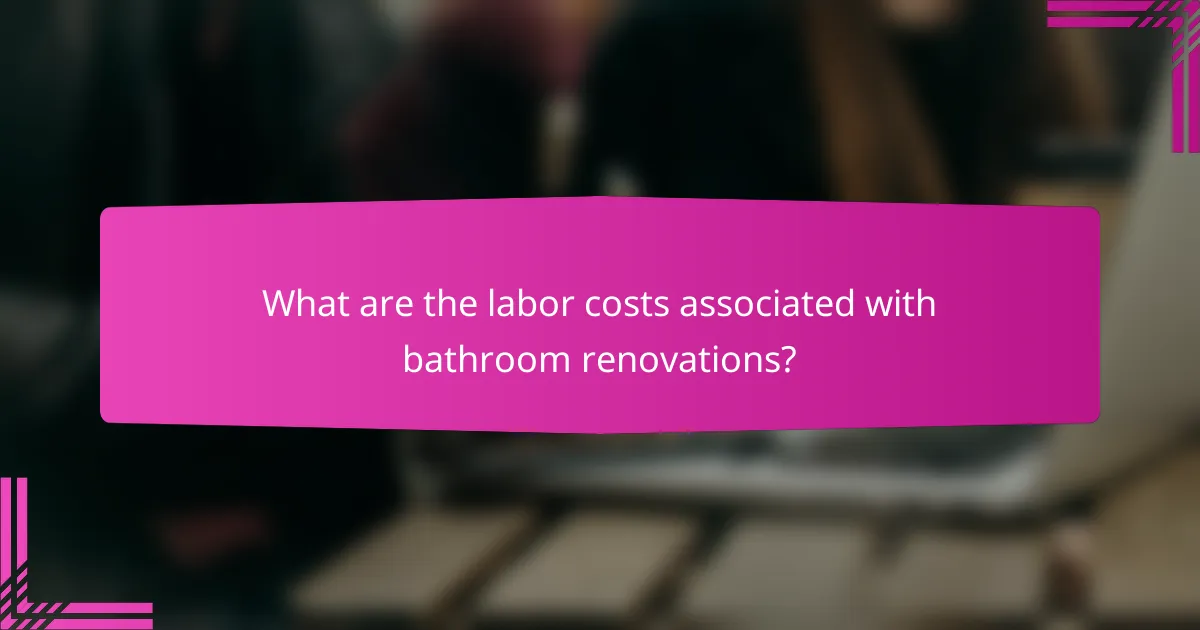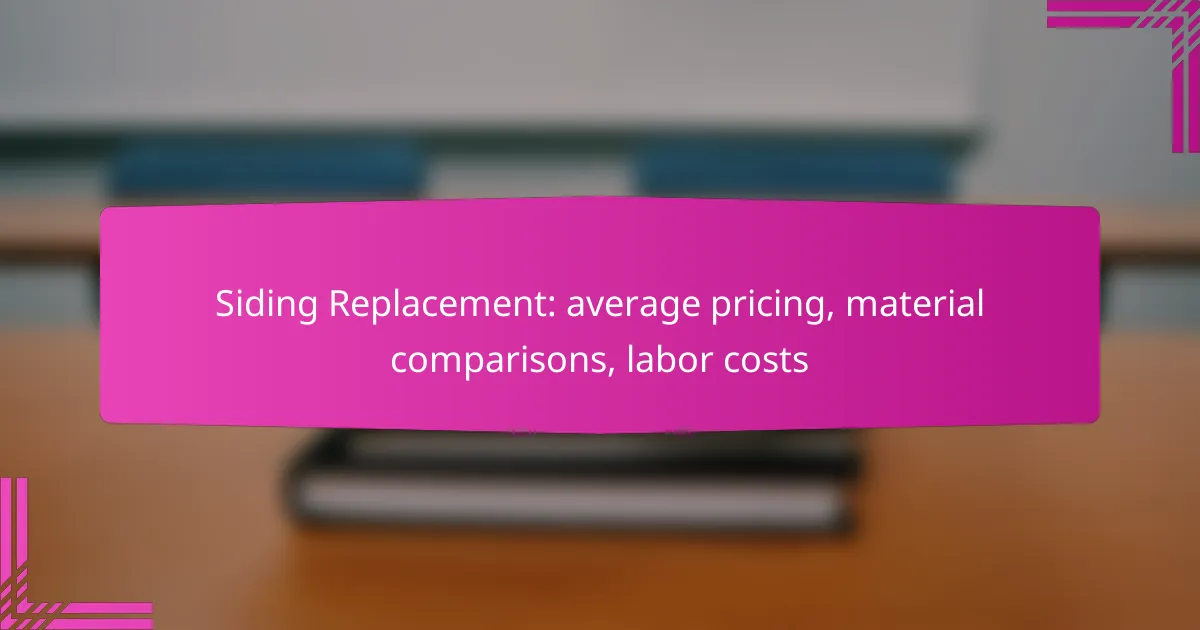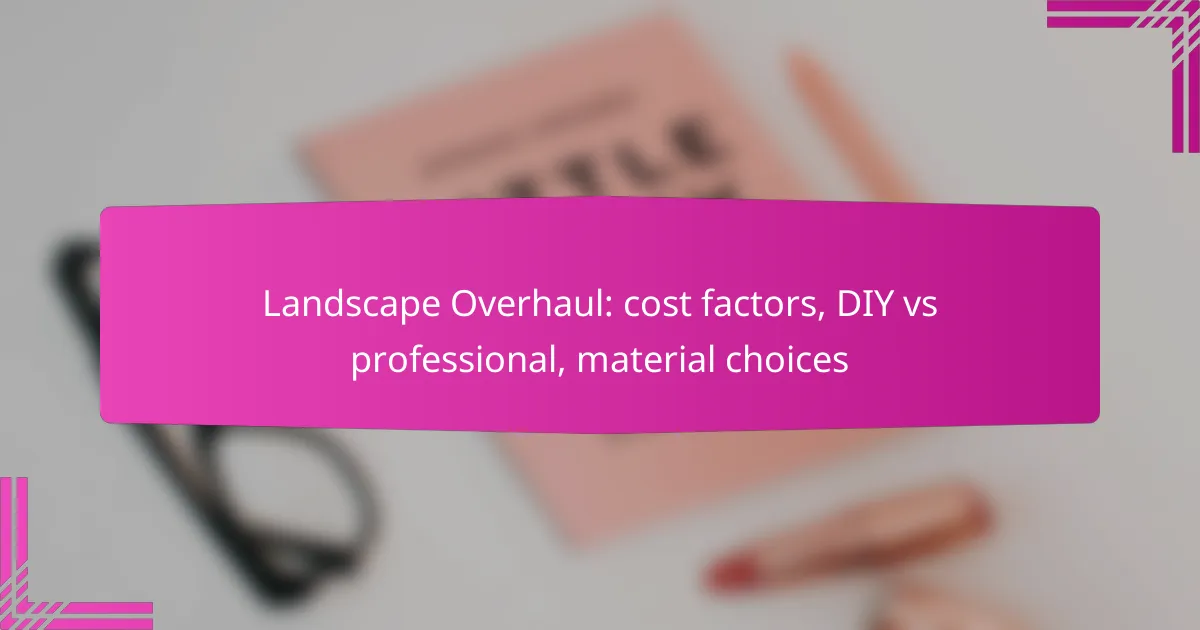Upgrading your bathroom requires careful budget considerations, including the costs of materials, labor, and fixtures. By understanding these expenses, homeowners can effectively plan their renovations and avoid overspending. Labor costs can vary greatly depending on the project’s complexity, often taking up a significant portion of the budget. Additionally, bathroom fixtures come in a wide range of prices, making it essential to research options that fit both your style and budget.

What are the budget considerations for a bathroom upgrade?
Budget considerations for a bathroom upgrade include the overall cost of materials, labor, and fixtures. Understanding these costs helps homeowners plan effectively and avoid overspending during renovations.
Average costs for materials
The average costs for bathroom materials can vary widely based on quality and style. For instance, basic tiles may range from $1 to $5 per square foot, while high-end options can exceed $15 per square foot. Fixtures like sinks and faucets generally start around $100 and can go up to several hundred dollars for designer brands.
Additionally, plumbing and electrical materials can add significant costs, often ranging from $500 to $2,000 depending on the complexity of the installation. Always factor in a contingency of about 10-20% for unexpected expenses.
Cost-saving tips for renovations
To save money on a bathroom renovation, consider refinishing existing fixtures instead of replacing them. For example, a bathtub can be reglazed for a fraction of the cost of a new one. Another tip is to shop sales or clearance items at home improvement stores, which can lead to substantial savings on materials.
DIY projects can also reduce labor costs, but ensure you have the necessary skills to avoid costly mistakes. Focus on cosmetic changes, like painting or updating hardware, which can refresh the space without a full renovation.
Financing options for upgrades
Homeowners have several financing options for bathroom upgrades, including personal loans, home equity lines of credit (HELOC), and credit cards. Personal loans typically offer fixed rates and predictable payments, while HELOCs allow borrowing against home equity, often with lower interest rates.
Another option is to explore financing through contractors, which may offer payment plans or promotional financing. Always compare interest rates and terms to find the best fit for your budget and financial situation.

What are the labor costs associated with bathroom renovations?
Labor costs for bathroom renovations can vary significantly based on the scope of the project and the professionals hired. Typically, homeowners should expect to allocate a substantial portion of their budget to labor, which can range from a few hundred to several thousand dollars depending on the complexity of the work.
Typical hourly rates for contractors
Contractor hourly rates for bathroom renovations generally fall between $50 and $150 per hour. Rates can differ based on the contractor’s experience, location, and the specific tasks required. For example, specialized trades such as plumbers or electricians may charge higher rates, often exceeding $100 per hour.
In metropolitan areas, these rates can be on the higher end of the spectrum, while rural areas may see lower costs. Always request multiple quotes to ensure competitive pricing.
Factors affecting labor costs
Several factors influence labor costs in bathroom renovations, including the size of the bathroom, the complexity of the design, and the materials used. Larger bathrooms or those requiring extensive plumbing or electrical work will typically incur higher labor costs due to the increased time and expertise needed.
Additionally, the choice of fixtures and finishes can impact labor rates. High-end materials may require more skilled labor for installation, which can drive up costs. It’s essential to balance quality and budget when selecting materials to avoid unexpected expenses.

How much do bathroom fixtures cost?
Bathroom fixtures can vary widely in price, typically ranging from budget-friendly options to high-end designs. Understanding the costs associated with sinks, faucets, toilets, and bathtubs will help you make informed decisions for your bathroom upgrade.
Average prices for sinks and faucets
The average cost for bathroom sinks ranges from around $50 to $500, depending on the material and style. Basic models made of porcelain or acrylic are generally less expensive, while designer sinks in glass or stone can be significantly pricier.
Faucets typically cost between $30 and $300. Standard models are available at lower prices, while high-end faucets with advanced features or unique designs can push the cost higher. Consider the warranty and brand reputation when selecting a faucet.
Cost ranges for toilets and bathtubs
Toilets generally range from $100 to $1,000, with standard models falling around the $200 mark. Higher-end options may include features like dual-flush systems or integrated bidets, which can increase the price.
Bathtubs can vary significantly in cost, from about $200 for basic acrylic models to over $5,000 for luxury freestanding tubs. When budgeting, consider installation costs, as they can add substantially to the overall expense.
High-end vs. budget fixture options
High-end fixtures often feature superior materials, innovative designs, and advanced functionality, which can justify their higher price tags. For instance, a luxury faucet may offer better durability and a unique aesthetic that enhances the overall bathroom design.
Budget fixtures, while more affordable, may lack some of the features and durability of their high-end counterparts. However, many budget options still provide good quality and can be a practical choice for cost-conscious renovations. Always compare warranties and customer reviews to ensure you’re making a wise investment.

What are the key factors to consider when selecting fixtures?
When selecting fixtures for a bathroom upgrade, consider durability, maintenance, style, and design compatibility. These factors significantly impact both the functionality and aesthetic appeal of your space.
Durability and maintenance requirements
Durability is crucial when choosing bathroom fixtures, as they are exposed to moisture and frequent use. Opt for materials like stainless steel, brass, or high-quality plastics that resist corrosion and wear over time.
Maintenance requirements vary by material. For example, chrome fixtures may require regular polishing to maintain shine, while matte finishes can hide water spots better. Always check the manufacturer’s guidelines for care instructions to ensure longevity.
Style and design compatibility
Fixtures should complement the overall style of your bathroom, whether it’s modern, traditional, or eclectic. Consider the color scheme, finishes, and shapes of existing elements like tiles and cabinetry to create a cohesive look.
When selecting fixtures, think about the scale and proportion in relation to your space. A large, ornate faucet may overwhelm a small sink, while sleek, minimalist designs can enhance a contemporary aesthetic. Aim for a balance that enhances the room’s functionality and visual appeal.

How can I maximize my bathroom upgrade budget?
To maximize your bathroom upgrade budget, focus on essential improvements that enhance functionality and aesthetics without overspending. Prioritize upgrades that offer the best return on investment, such as fixtures and finishes that elevate the space while considering labor costs and material prices.
Prioritizing essential upgrades
Start by identifying upgrades that will significantly impact your bathroom’s usability and appearance. Essential upgrades often include replacing outdated fixtures, improving lighting, and enhancing storage solutions. Aim to allocate around 30-50% of your budget to these critical areas.
Consider the condition of existing elements. If plumbing or electrical systems are outdated, addressing these issues can prevent costly repairs later. Focus on upgrades that improve energy efficiency, such as low-flow toilets and LED lighting, which can save money over time.
DIY vs. professional installation
Deciding between DIY and professional installation can greatly affect your budget. While DIY projects can save on labor costs, they require time, skill, and the right tools. For simpler tasks like painting or installing accessories, DIY may be feasible, but complex installations like plumbing should typically be left to professionals.
Professional installation can range from $50 to $150 per hour, depending on the complexity of the job and local labor rates. Weigh the potential costs against the risks of DIY mistakes, which can lead to additional expenses. If unsure, consult with a contractor to get estimates and advice tailored to your specific project.

What are the emerging trends in bathroom upgrades?
Emerging trends in bathroom upgrades focus on enhancing functionality, sustainability, and technology integration. Homeowners are increasingly looking for smart solutions and eco-friendly materials that not only improve aesthetics but also promote efficiency.
Smart bathroom technology
Smart bathroom technology includes devices that enhance convenience and efficiency, such as smart showers, automated faucets, and intelligent toilets. These fixtures often feature touchless controls, water-saving capabilities, and even personalized settings for temperature and water flow.
When considering smart technology, evaluate the installation costs and compatibility with existing plumbing. Prices can vary widely, with basic smart faucets starting around $100 and advanced systems reaching several hundred dollars. Always check for user-friendly interfaces and reliable customer support.
Sustainable materials and fixtures
Sustainable materials and fixtures are becoming a priority in bathroom upgrades, with options like recycled tiles, low-flow toilets, and eco-friendly vanities. These choices not only reduce environmental impact but can also lower water bills over time.
Consider the long-term savings associated with sustainable fixtures, which often have higher upfront costs but provide significant savings on utility bills. For example, low-flow toilets can save up to 13,000 liters of water annually. Look for certifications like WaterSense or Energy Star to ensure products meet sustainability standards.



